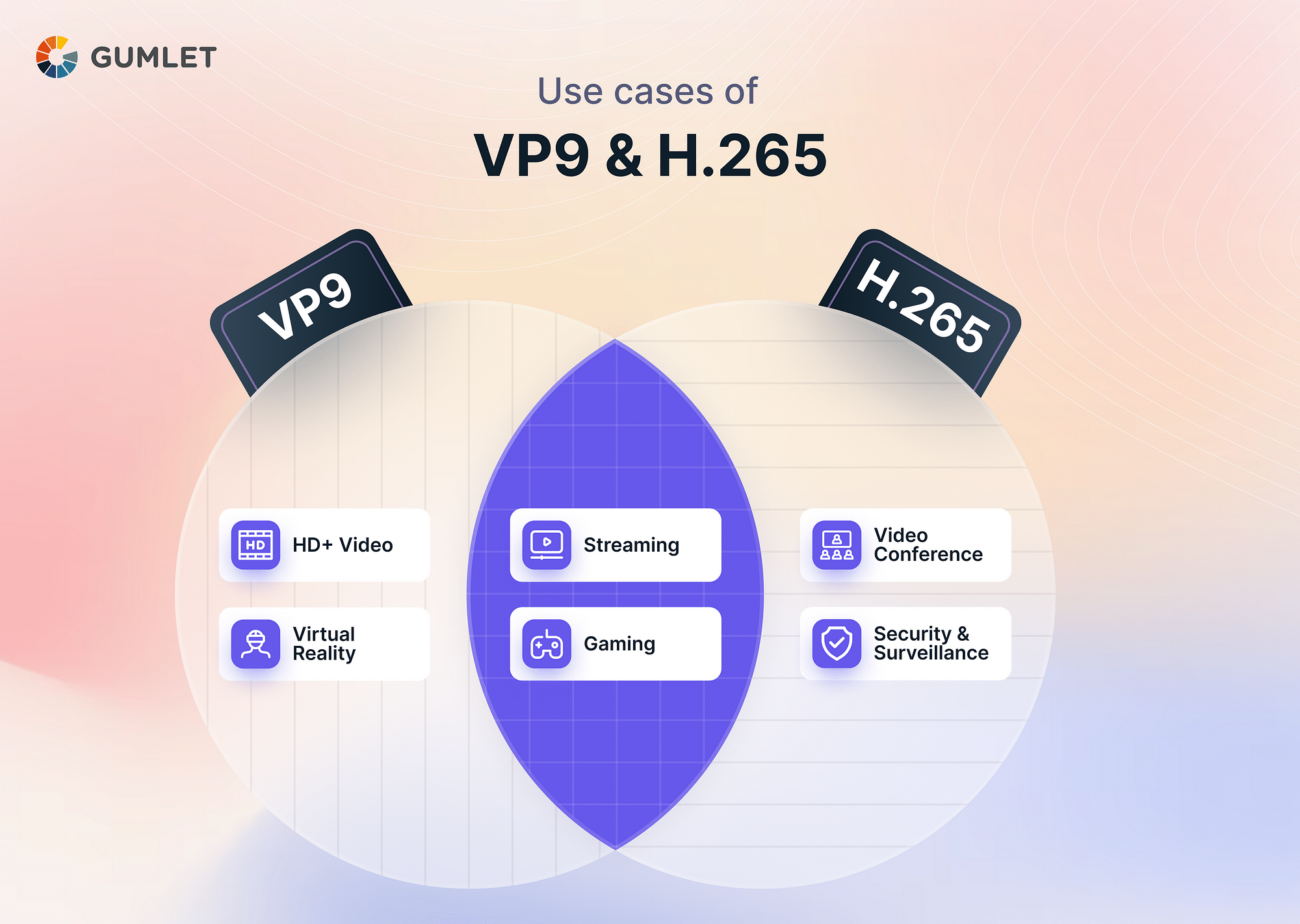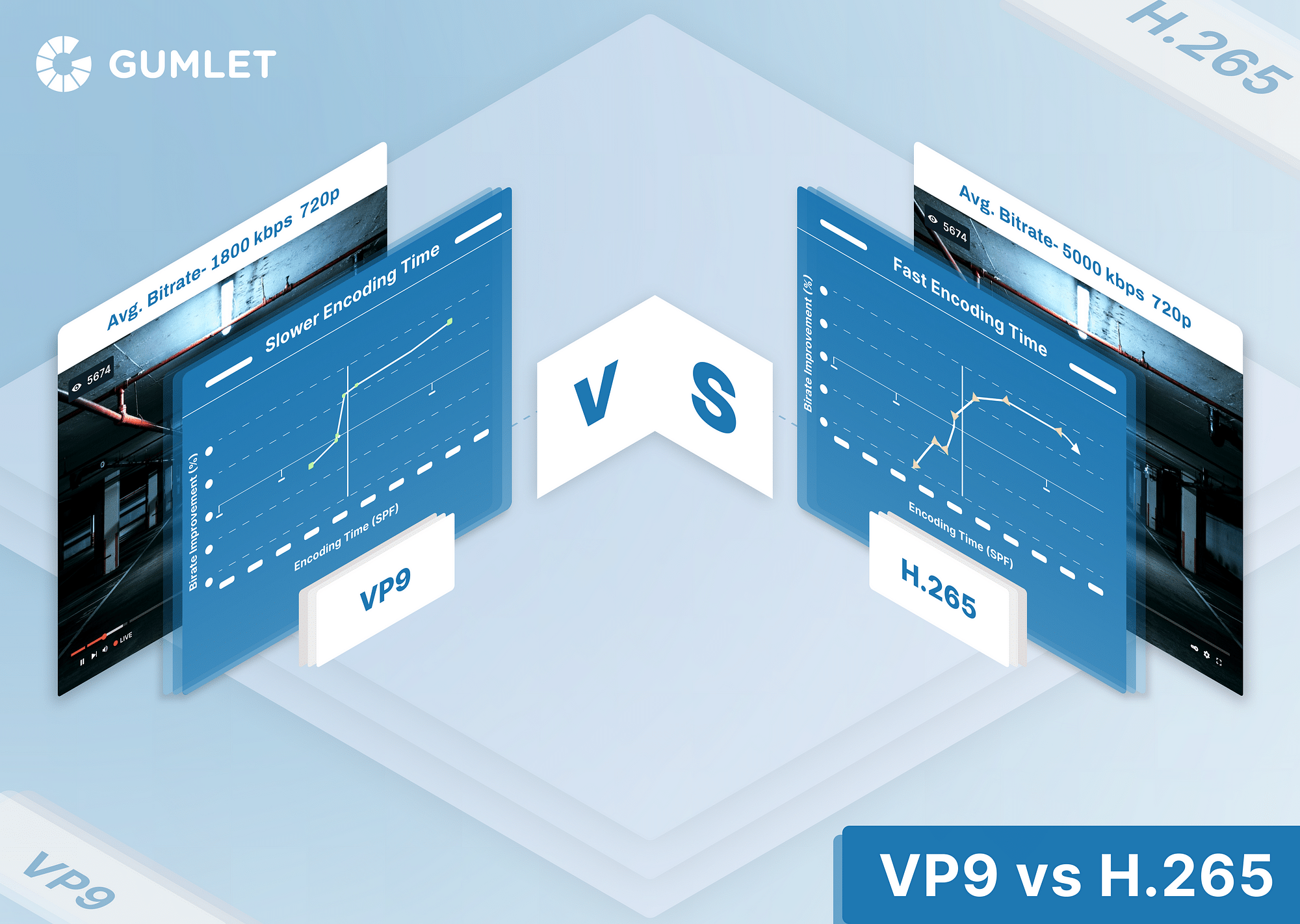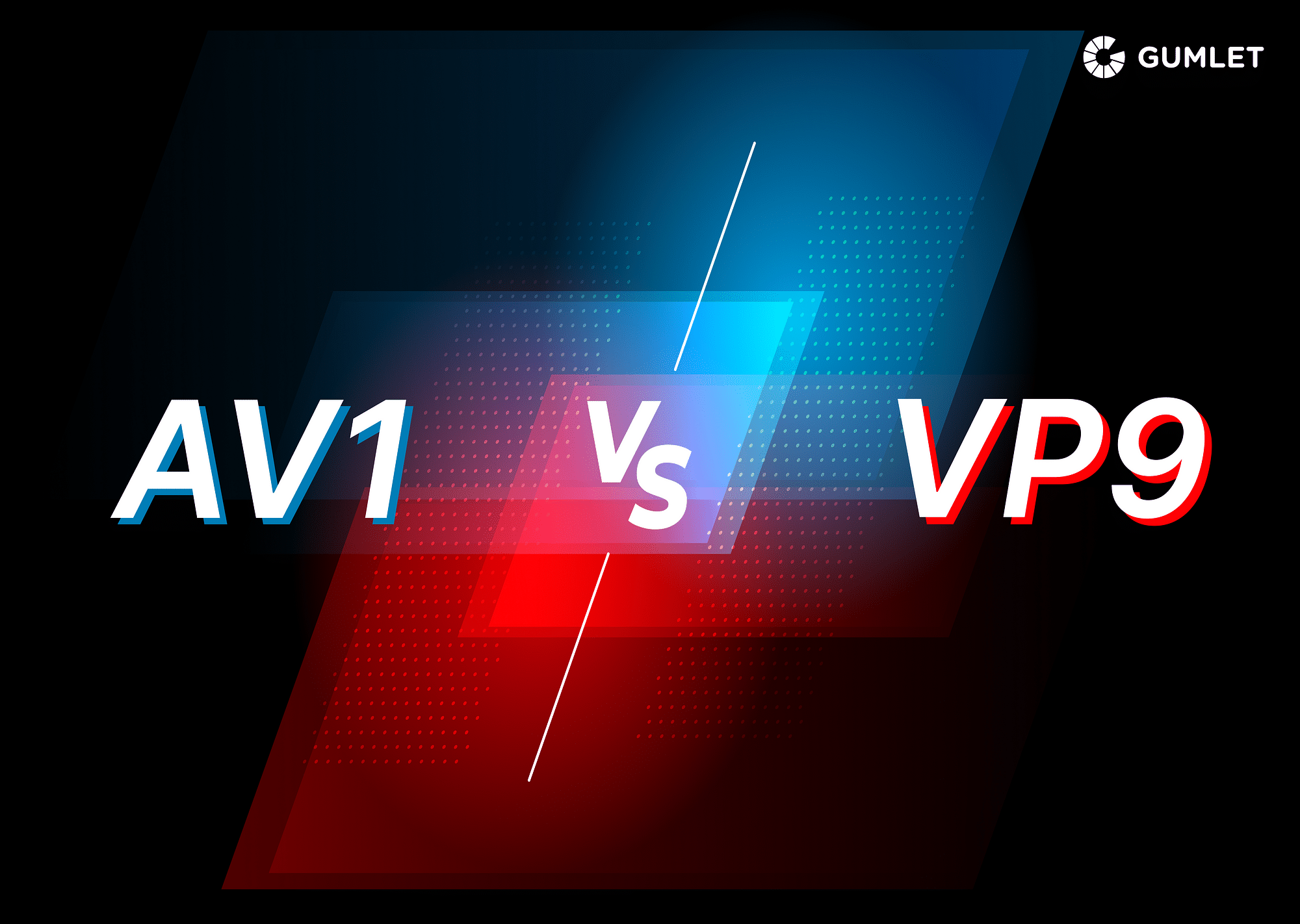Given the introduction and popularization of UHD TVs, compressing 4K content for seamless video delivery has become extremely crucial. VP9 and H.265 are two video encoding mechanisms launched to enable top-notch compression performance and uninterrupted video delivery. Both codecs offer significant bit rate reductions and improvement in compression efficiency compared to their predecessors. But when the VP9 codec and the H.265 codec are pitted against each other, which one comes out on top? Let's find out!
What is VP9?
VP9 is a new-age video codec developed by Google as an open-source standard. It offers significant enhancements in terms of compression efficiency and other key areas of performance compared to its predecessor, VP8, and older codecs like H.264. The main aim of VP9 is to deliver a seamless streaming experience while minimizing bandwidth consumption.
What is H.265?
H.265 is also known as High-Efficiency Video Coding (HEVC). It is an upgrade over older video codecs like H.264 with several improvements in terms of compression efficiency. HEVC employed inter-frame and intra-frame prediction models to improve its compression performance and is highly adept at delivering high-resolution video content while limiting bandwidth usage.
VP9 vs. H.265: Key Differences
The VP9 vs. H.265 debate has been going on for far too long. Here is a detailed head-to-head list of either codec’s most essential comparison metrics:
| Parameter of Comparison | VP9 | H.265 (HEVC) |
|---|---|---|
| Compression Efficiency | Lower compression efficiency | Better compression performance and bitrate savings |
| Hardware and Software Support | Strong software support for web browsers; Fewer hardware compatibility options. |
Software support for media players and video editing software; Better hardware support. |
| Encoding Quality | Lower encoding quality at low bitrates but beats HEVC at higher bitrates. | It offers better encoding quality at lower bitrates. |
| Encoding Time | Slower Encoding time | Faster Encoding time |
| CPU Consumption | Better CPU performance | Higher CPU consumption than VP9 |
| Bandwidth | VP9 consumes more bandwidth than HEVC | HEVC has 20% more bandwidth savings than VP9 |
| Royalty | Free and open-source codec. | Complex and costly licensing model |
Compression Efficiency
Based on the tests evaluating the compression efficiency of the video codecs HEVC and VP9, HEVC generally offers superior compression efficiency compared to VP9, with bitrate savings ranging from 0.6% to 38.2%. This can be attributed to the more complex and advanced algorithms used by HEVC, which allow it to compress video data while maintaining high visual quality more efficiently.
Hardware and Software Support
While web browsers widely support VP9 and have robust software support, HEVC provides better hardware compatibility options. Besides having software support for media players and video editing software, HEVC is also supported by smartphones and Android TVs.
Encoding Quality
HEVC is superior in encoding quality, but only for low bitrates. VP9 can perform better with the proper hardware and software support for higher bitrates. VP9's 64x64 superblock size for all resolutions can result in lower encoding quality at low bitrates. In comparison, HEVC offers better visual quality, particularly on low bitrates, by providing superblocks of 64x64, 32x32, and 16x16 for low-resolution videos.
Encoding Time
Although VP9 and H.265 are slower than the popular H.264 codec, HEVC still outperforms VP9 in encoding speed, thanks to better hardware support. This ultimately accelerates HEVC's encoding performance.
CPU Consumption
Regarding CPU consumption, HEVC does not provide any significant improvements over its predecessor, H.264. Compared to HEVC, VP9 remains superior due to its less complicated algorithms.
Bandwidth
When it comes to bandwidth savings, HEVC is superior. It requires less bandwidth and doesn't experience buffering disruptions during streaming or downloading.
Royalty
When it comes to royalties and licensing, VP9 stands out as the clear winner due to its open-source nature and lack of cost. In contrast, HEVC has a complex licensing structure, making it more challenging to adopt.
VP9 vs. H.265: Which is Better for Streaming?
VP9 is generally the more powerful alternative to stream video content on websites like YouTube since the codec has stronger web browser support. Moreover, because of its efficiency in delivering high-quality video content at low bitrates, it’s the perfect codec for streaming seamlessly over low-bandwidth networks.
H.265, on the other hand, offers vastly superior performance in terms of compression efficiency and high-resolution video delivery. It also has stronger hardware support, allowing 4K and HDR streaming in connections where bandwidth limitations might be a major concern.
In the end, both codecs have their own uses. VP9 is open-source and easily accessible. HEVC is better suited for enterprise-level applications. What’s better for you depends entirely on how you will use it.
Compare your current transcoding levels against Gumlet's advanced per-title-encoding.
Use Cases of VP9 and H.265
VP9 and HEVC codecs are widely used in various industries for various applications. Here is a list of some major platforms where these video encoding standards are deployed:

- Streaming: VP9 and HEVC are popular for streaming high-resolution video content, with VP9 being the default codec for YouTube and HEVC being used by VOD platforms like Prime Video and Apple TV+.
- Gaming: VP9 and HEVC are used in the gaming industry to compress and deliver high-quality video content, such as game trailers and footage releases. VP9 is the go-to algorithm for Twitch and YouTube, while HEVC is used by popular gaming consoles like PlayStation 5 and Xbox Series X.
- Video Conferencing: The Video Conferencing industry boomed during the COVID-19 pandemic, with HEVC being adopted by many major platforms such as Zoom, MS Teams, and Skype to meet industry standards and compress high-quality video streams.
- Security and Surveillance: Many companies and organizations use the HEVC standard to compress high-resolution video feeds from their cameras while optimizing storage space requirements and bandwidth consumption.
- Broadcasting: H.265’s high compression efficiency makes it the perfect video codec for broadcasting live events, major sporting face-offs, concerts, etc.
- Virtual Reality: The VP9 standard is popularly used in the Virtual Reality industry, which has been booming recently. The standard’s ability to compress and deliver high-resolution content seamlessly makes it a good option.
Conclusion
The introduction of VP9 and HEVC is a great boon for the streaming industry, as they can efficiently deliver high-resolution video content while optimizing bandwidth consumption and storage. Both codecs are powerful and have different areas where one is better, so it is important to look at their comparison metrics and decide based on your requirements.
FAQs
1. Is VP9 better than H.265?
VP9 is better than H.265 because it is royalty-free and has a relatively less complicated encoding process. HEVC, on the other hand, provides a better solution for high-resolution videos because of its improved compression performance and bitrate savings.
2. Does H.265 offer better quality than VP9?
H.265 offers better quality videos as against VP9, but only in the case of low bitrates. But regarding videos with high bitrates, H.265 is up against VP9 in a fair head-to-head battle.
3. H.265 vs. VP9: which has more file size?
The compression performance of H.265 is superior. So, the file size of the videos encoded by HEVC will be smaller than those encoded by VP9 at the same apparent visual quality.
4. H.265 vs. VP9: which codec is best for 4K?
H.265 and VP9 are equally well-equipped to deal with 4K and 8K videos. But because of, HEVC’s greater compression efficiency and encoding quality could be more suitable for high-end requirements.




